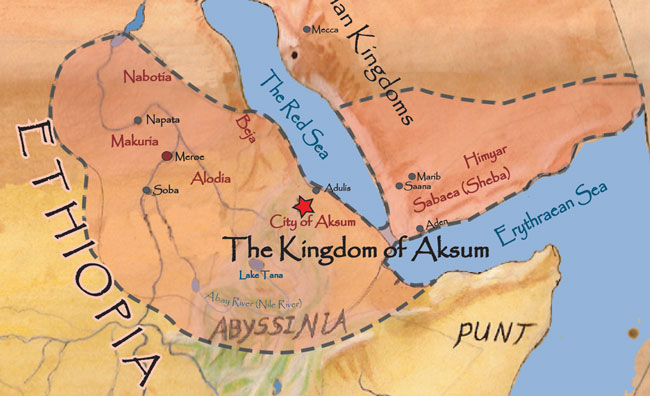1. Unification of North and South Yemen
The Republic of Yemen was born in 1990 when the Islamist North Yemen and the Marxist South Yemen merged. North Yemen was a remote and conservative theocracy while South Yemen was more open and it made cooperation with conservative Arab countries. South Yemen was the only Marxist Arab country.
There were armed disputes about the border in 1972 and 1979 and after the conciliation the two countries announced to pursue unification which happened when the Cold War was ending in 1990. North Yemen's Sanaa became the new capital and the president was North Yemen's leader Ali Abdullah Saleh, who had survived many assassination attempts.
2. Ottoman rule
From 1517 until the first World War parts of Yemen were controlled by the Ottoman Empire. During the 1800s the British Empire gained areas from the current Yemen. North Yemen became independent in 1918 when the Ottoman Empire fell in the World War. South Yemen became independent in 1967. In one point North Yemen wanted to merge with United Arab Republic which Egypt and Syria had established together. Aden was part of the British India until 1963 when it joined the Federation of South Arabia, a British Protectorate established in 1962.
The Republic of Yemen was born in 1990 when the Islamist North Yemen and the Marxist South Yemen merged. North Yemen was a remote and conservative theocracy while South Yemen was more open and it made cooperation with conservative Arab countries. South Yemen was the only Marxist Arab country.
There were armed disputes about the border in 1972 and 1979 and after the conciliation the two countries announced to pursue unification which happened when the Cold War was ending in 1990. North Yemen's Sanaa became the new capital and the president was North Yemen's leader Ali Abdullah Saleh, who had survived many assassination attempts.
 |
| North and South Yemen |
2. Ottoman rule
From 1517 until the first World War parts of Yemen were controlled by the Ottoman Empire. During the 1800s the British Empire gained areas from the current Yemen. North Yemen became independent in 1918 when the Ottoman Empire fell in the World War. South Yemen became independent in 1967. In one point North Yemen wanted to merge with United Arab Republic which Egypt and Syria had established together. Aden was part of the British India until 1963 when it joined the Federation of South Arabia, a British Protectorate established in 1962.
 |
| Yemen in 1962-1967 |
3. Arabia Felix
The Romans called Yemen "Arabia Felix" which means Happy Arabia. Yemen was then famous for their spice, perfume, myrrh and incense trade. But during the first centuries after Christ the wealth in Happy Arabia diminished when the spice and incense trade decreased.
4. Legacy of Menelik
The Legacy tells that the the queen of Sheba, Bilqis and Solomon, the king of Israel had a son called Menelik, who became the founder of the ancient Ethiopia which was called Axum at those days. The kingdom of Sheba covered then approximately the current Yemen. The encounter of queen Bilqis and king Solomon is mentioned in both, the Bible and the Qur'an.
5. Living conditions
Yemen is the poorest Arab country
Revenue from oil, but the revenue have gone to corruption and war
Literacy in Yemen is 65%
Population is undernourished
Over half a million refugees have come over the sea from Somalia to Yemen
The Legacy tells that the the queen of Sheba, Bilqis and Solomon, the king of Israel had a son called Menelik, who became the founder of the ancient Ethiopia which was called Axum at those days. The kingdom of Sheba covered then approximately the current Yemen. The encounter of queen Bilqis and king Solomon is mentioned in both, the Bible and the Qur'an.
5. Living conditions
Yemen is the poorest Arab country
Revenue from oil, but the revenue have gone to corruption and war
Literacy in Yemen is 65%
Population is undernourished
Over half a million refugees have come over the sea from Somalia to Yemen
900s BC Kingdom of Sheba covers the current Yemen
550 The Dam of Maribi collapsed, Yemen fractured into small city states and tribe communities
600s The Arabs conquer the area and spread Islam, before that Christianity had arrived at the area with the Ethiopians
1517 Ottoman Empire conquers Yemen, mutta the real power stays within the Imams
1839 British East-India Company conquered Aden as their base
1872 The Ottoman Empire occupies North Yemen again
1886 The British make protection agreements with Fahdhli Sultanate, Qu'aiti, Kathiri, Mahra and Beiha Emirates
1918 North Yemen declares independence under the name of Mutawakkilite Kingdom of Yemen after the Ottoman Empire had fallen in the First World War
1937 Aden becomes a separate colony belonging before to the British India
1962 Federation of South Arabia is established
1962 North Yemen falls into civil war
1963 Aden is annexed to the Federation of South Arabia
1970 War between republicans and monarchists
1972 and 1979 armed conflicts about the border of South and North Yemen
1986 Short civil war in South Yemen
1990 North and South Yemen merge as the Cold War ends
1995 Fights against Eritrea about the Hanish islands
1998 Clashes with Saudi Arabia about the border
2011 Arab Spring leads to major demonstrations demanding the resignation of Saleh, who had been in power since 1978, which succeeded eventually
Sources:
https://en.wikipedia.org/wiki/Federation_of_South_Arabia
https://en.wikipedia.org/wiki/Yemen
https://en.wikipedia.org/wiki/United_Arab_Republic
Maailman liput maat ja historia by Kimmo Kiljunen
https://en.wikipedia.org/wiki/Yemen
https://en.wikipedia.org/wiki/United_Arab_Republic
Maailman liput maat ja historia by Kimmo Kiljunen




No comments:
Post a Comment